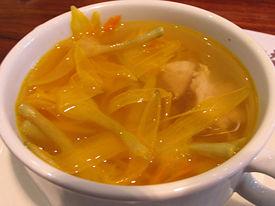General information about Hemerocallis (Daylily):
If you love lilies, you will adore our selection of daylilies!
Offering a look-alike blossom in such a range of colors and bloom times that you can actually achieve a full season of color from a single species of flower, our daylilies are among the hardiest and most prized.
Essentially, we’ve done the work for you, isolating the best options from pale yellow to dark golden hues and from mauves to pinks.
Basal,
blade-like foliage arches gracefully from the daylily creating a complete groundcover useful for
erosion control
on
slopes,
as specimen plants or background plantings.
Of course our selections are also reliable favorites tolerating a wide variety of soil conditions.
Varieties are listed below by color and include individual plant information such as
bloom color,
bloom characteristics,
height, bloom time and winter habit in zone.
A garden of daylilies looks like a summer tea party with orange and yellow china cups suspended amidst a tablecloth of green foliage.
Why are they so beloved?
Simply put, few garden perennials are easier to grow than daylilies.
They are tolerant of
poor soil,
salt,
high heat, and
drought,
but do bloom better with regular watering.
They’re also pest resistant.
Daylilies form a dense groundcover,
choking out weeds
in the process.
They attract
butterflies
and
hummingbirds,
and some are
fragrant.
Otherwise undemanding, daylilies will do best with at least six hours of sunlight and reasonably fertile soil.
They perform well in a wide range of well-drained soils; however, they will steal the show if you give them a deep, fertile loam.
Impervious to just about anything nature throws at them, you will still observe climatic conditions, seasonal weather variations, and general plant health all play a factor in a plant's ability to
re-bloom.
They are used for
borders and edging,
cut flowers, massing over large areas, in clumps as color accents, as backgrounds, and in containers.
Mixing early and late season bloomers in the same bed creates wave upon wave of color month after month.
Most people are familiar with the versatility and vivid fusion of color daylilies bring to gardens, but what you will find among our selections are the cream of the crop offering color and bloom-time variety in addition to reputations for excellent performance. You just can’t go wrong!
See all daylilies
Things to Note
Our daylilies are field grown
single-fan divisions
and have been in the ground at least two growing seasons, resulting in a large, hardy plant you will love.
After you have placed your order, the daylilies are freshly dug, any long tops are cut back, and the plants are packed in peat moss.
This ensures that the daylilies will quickly establish themselves in your garden while experiencing little transplant shock.
Keep in mind, most daylily plants shipped during summer will probably not bloom the same year.
Daylilies delivered in early spring will have just begun to break dormancy, thus will tend to have smaller, tenderer top growth, and most will develop flower buds the first year.
Some people ask about
daylily rust.
We assure you we have never had daylily rust at our nursery.
Some of our daylilies are described as "semi-evergreen", meaning that they retain at least some of their green foliage well into winter (shedding leaves in cold climates but not where winters are mild).
Interesting Facts
Daylilies are edible.
The young green leaves are edible raw or cooked. Older leaves become fibrous. Tubers are also edible raw or cooked with a savory, nutty flavor. Young tubers are best, though the central portion of older tubers is also good. Steam or boil the tubers as a potato substitute, or toss them raw onto a salad instead of croutons. The flowers can be eaten raw or cooked. The petals are thick and crunchy, making very pleasant eating raw, with a nice sweetness at the base because of the nectar. They taste somewhat like fresh peas. They can be fried for storage and used as a thickener in soups and stews, or used as a relish. Leaves and young shoots can be cooked and used as a substitute for asparagus or celery. Take small shoots, strip away the larger leaves, sauté in a little garlic and oil, add raw to salads, or simply steam and drench in butter for a nice, crunchy treat.
|
 (0)
(0)
 Full sun
Full sun  Part sun
Part sun







